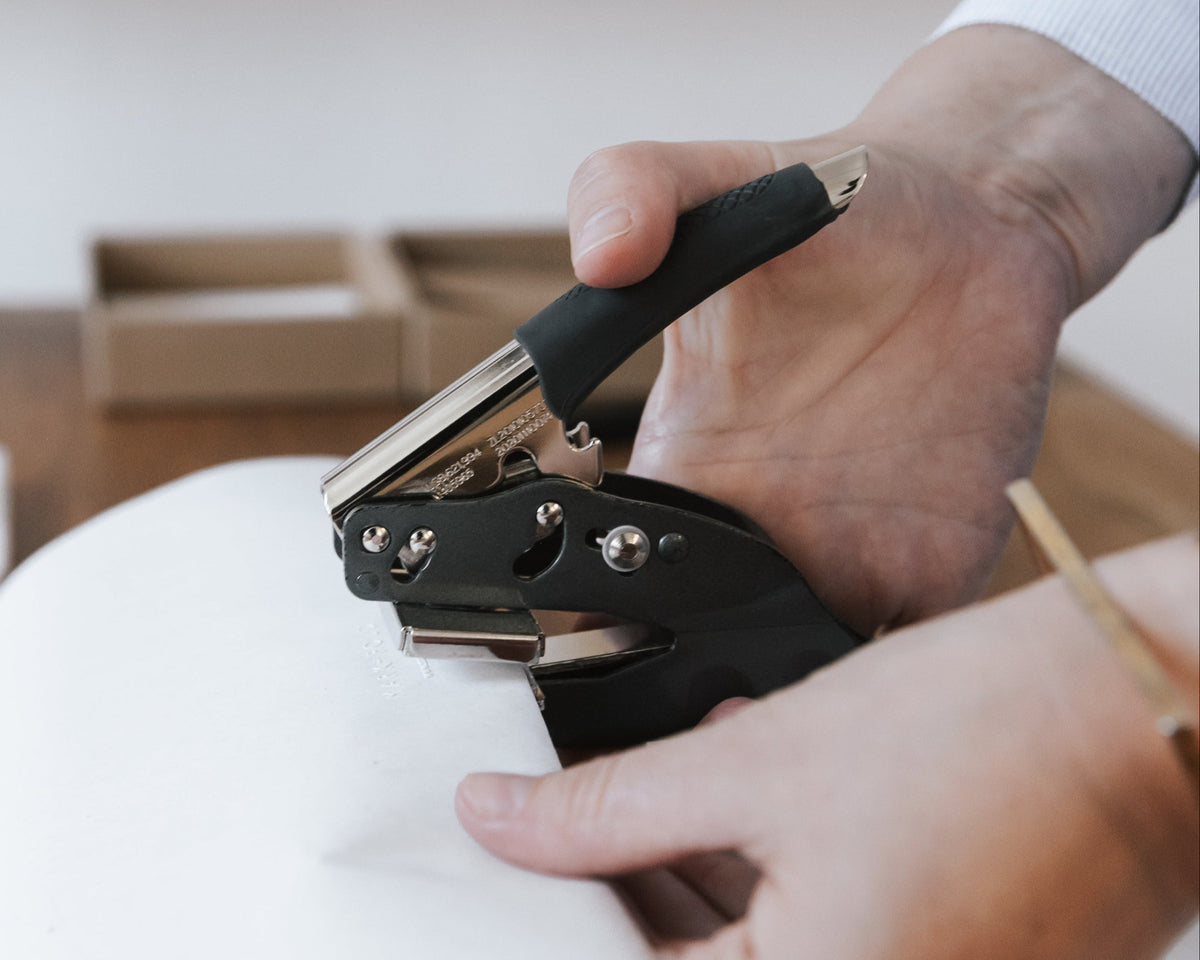At Mark+Fold, every product begins with a question: How can we make this work for you?
Before founding Mark+Fold, Amy worked in design agencies, including a map design agency that designed walking maps for Transport for London. During that formative experience, she learned a lot about user-centric design.
“You can’t design a map without user testing it, because it has to work. This mindset—prototyping, testing, listening—underpins everything we do.
Before I started Mark and Fold, I worked in design agencies, and one of them was a map design information design company where I met my husband, and we used to design walking maps for TfL. Many team members had studied information design at Reading University; it's a specialist course, and I learned all these incredible techniques from them about user testing and user-centred design.”
We would make prototypes and go down to Oxford Street and say to someone, Look at this lovely map. Can you find Baker Street? And you found out quickly if they could find it or not. And so we were constantly testing, and it was this really iterative process. “
The creaky stair method
We often talk about the “creaky stair” method. If you have a staircase and one stair creaks, you don’t need a thousand people to find it—just a few. In the same way, we test products with small groups of thoughtful customers, listening carefully to their experiences. It’s about catching the things we might have missed, but also discovering what really matters to the people who use our products day in and day out.
Co-creating with our community
This process has worked well for us. We really, really listen because we genuinely want to hear what our customers think, say and feel when they use our products, it’s not just lip service where feedback gets screwed up and thrown in the bin. We also find that this approach builds community; as a lovely side effect, our customers feel valued, so it works really well for us.
The first survey
Before launching the first Mark+ Fold notebook, we sent a simple email asking friends and colleagues: What do you look for in a notebook? That first informal survey, now nearly ten years ago, shaped our original design. One comment stood out: a notebook should have “really good pickup-ability.” It should feel like an extension of you—easy to grab, soft enough to bend, comfortable enough to use without thinking. That idea, and others like it, led us to focus on softback designs in our early years.
Prototypes in the post
When we developed our first planner pad, we invited early customers on Instagram to test it. We sent out prototype packs—A, B, C, D—each with subtle variations: grids, tick boxes, and margins. We asked them to use them and tell us what they thought. The responses were generous, considered, and immensely helpful. That feedback directly shaped the final version, which is now one of our most popular products.
It was more than just research. It created a sense of shared ownership, and people felt part of something.
Listening and iterating
In 2016, as we prepared to design our first diary, we reached out again. We spoke to people who really use diaries, who know exactly how their week should feel on a page. One person told us losing their diary would be worse than crashing their car! Another described how they “saw” the week in their mind. These insights formed the blueprint of our now award-winning diary that is used by thousands of people all around the world, and they keep coming back, which is amazing!
We do a formal customer survey every spring. Some of the insights are niche—people talking passionately about margin widths or line spacing. But these are the details that make or break a product. When we created our lined notebook, we tested several line gaps with real handwriting samples, landing on a spacing that balanced legibility with space to breathe.
Small batches, real feedback
Not everything starts with a full launch. Sometimes we begin with a small batch—a beta version—priced slightly lower and sent out with a note: Tell us what you think. That’s how we developed our monthly planner, and it’s how we’ll approach our upcoming travel journal. By starting small, we learn fast and adapt.
What's next?
Recently, we tried something new: an in-person design session. Inspired by the crits Amy did at art school—where work is pinned to the wall and discussed—we invited customers to share their thoughts on some of our upcoming designs, including a travel journal that we plan to launch in time for the summer holidays.
It’s an opportunity to get insight into what works for people. We have lots of new ideas for formats - we’re going to test and get people’s thoughts, going back to the creaky stair principle, and check we haven't missed something fundamental.
Sometimes graphic design can get lost in the aesthetic, but, as a brand, we exist to get people inspired to get stuff done, so it’s important that are products work hard to do that!
We don’t know exactly what to expect, but we know it will be valuable. After all, it’s how we’ve always worked.
Shop our Customer-Led Design Collection


